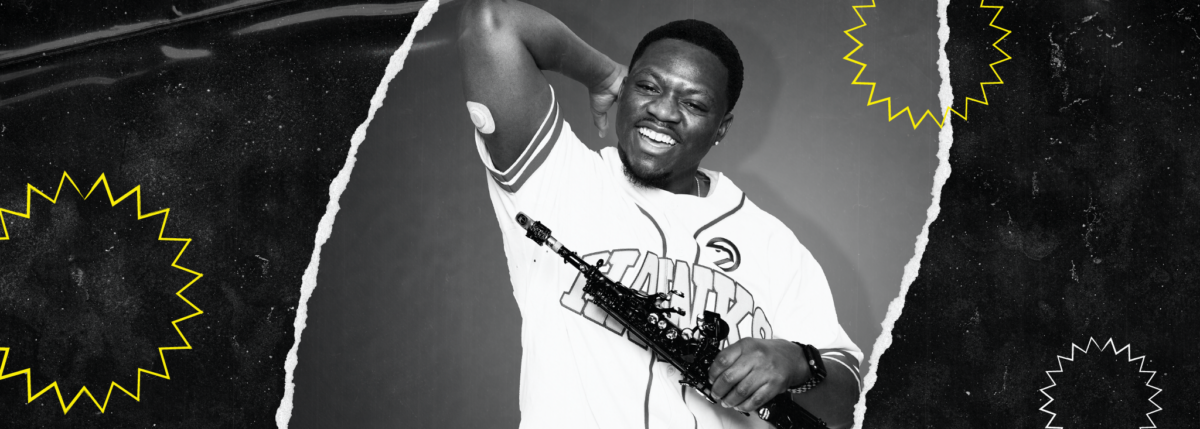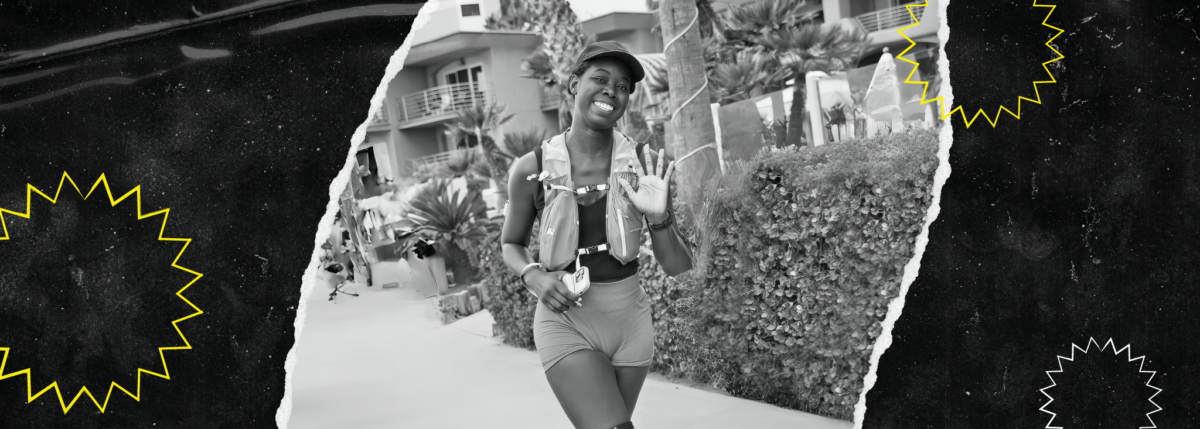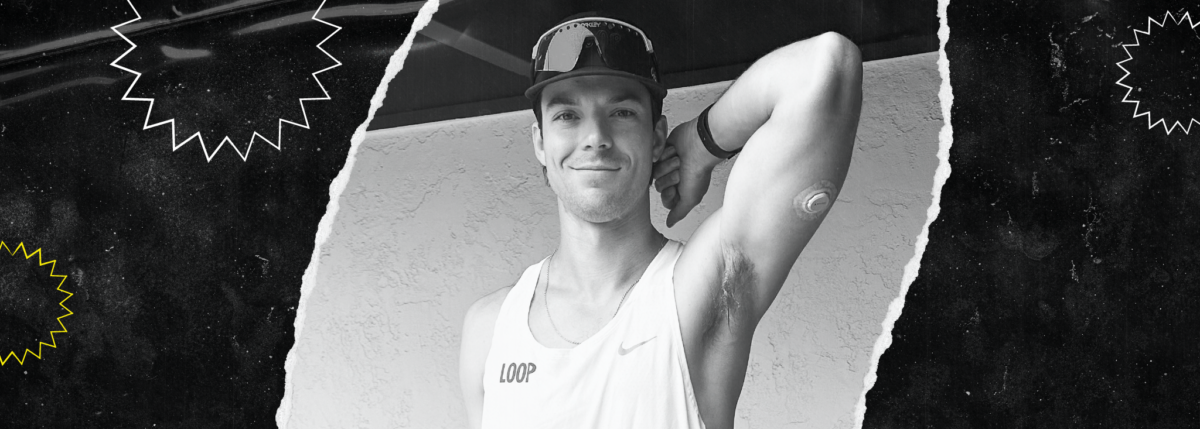Being My Own T2D Success Story with Omnipod
Written by: T'ara Smith, MS, Nutrition Education
4 minute read
September 10, 2021
Prince Blue joins Beyond Type 2 to discuss updates to his journey with type 2 diabetes, including finding weight loss success with Omnipod.
Prince Blue joins Beyond Type 2 again to share an update on his journey with type 2 diabetes (T2D) and how Omnipod has helped him reach his glycemic and weight goals. In the interview below, he also discusses why people with T2D shouldn’t feel ashamed to use insulin and how they can be their own success stories. For the full interview, watch the video below.
BT2: Thanks for joining us again, Prince. Could you give them a brief rundown of your type 2 journey in the beginning?
I was diagnosed with type 2 in 2016, with an A1C of 18. High blood sugar, hypertension, blurred vision, lethargy, tired, either constantly hungry, losing weight while still eating dangerous-sized proportions. I ran the gamut of all the symptoms you can have with type 2, I had them. My A1C is now 5.8 percent.
How were you introduced to Omnipod DASH? Could you discuss your experience with that and your fear of needles?
Well, I started off with the pen and gave myself insulin shots. But I have a fear of needles so I wouldn’t do it. I would see the doctor and she’d see that my levels weren’t getting any better. I was always upfront with my doctor about my fear of needles and how I had issues giving myself insulin. Behind her, there was an Omnipod brochure. I inquired about it and after she explained to me what it does, I asked to get started on it.
With Omnipod DASH, you receive a PDM that controls your insulin pump and can help you calculate your carb content so you’re taking the right amount of insulin. How did that help you kind of change your perspective on your type 2 diabetes?
It was huge because it helped me know how much insulin I should be getting or giving myself. With the food database, I put in what I’m eating, you find it and it does all the calculations, and boom, you’re done. So that’s the best thing about it. Technology is not going anywhere, and I think it’s just the best marriage when it comes to handling type 2 diabetes, especially with the younger generation. The thing about the Omnipod is, it’s very easy and simple to use.
You’ve been documenting your weight loss and diabetes journey on social media this year. How much weight have you lost since you started? What changes did you make in your life?
In January 2021, I was 310 pounds, I decided to buckle down and exercise, use portion control and do whatever else I needed to do. Recently, I weighed myself and I was 265 pounds. So I went from 310 to 265 pounds since January.
I would wake up in the morning to take my daughter to school and then head straight to the gym. The best thing I did was not complicate things. I would focus on doing something at the gym. I would look up an exercise routine and focus on that. I exercised about five days a week. There were days I didn’t want to do it or I felt like the scale wasn’t working but I knew changes were happening. My energy levels were going up and my appetite changed, too. After working out, the rest of my day was focused on my diet. I didn’t cut anything out, I just ate less of it—pizza, cookies, chips and fried food. I just had to be consistent, and I was. I also focused on eating things like bananas, apples and cucumber salad. I try to mix in as much of the good stuff as I can.
My best-kept secret is eating kids’ meals. If I go to McDonald’s or another place with my kids, I would get a kids’ size. You’d be surprised how much adjusting portion sizes works when you listen to your hunger cues instead of having your eyes be bigger than your stomach.
Again, not overcomplicating things, here. I didn’t want to get discouraged, so I took it one day at a time.
How did your insulin usage and blood glucose levels change over time?
I went from always getting beeps from my Dexcom telling me my blood sugar was too high to me and my wife getting alerts that I was going too low. My wife would wake me up telling me I was in the 3.3-3.9 mmol/L60-70 mg/dL range, and I needed to eat a snack. This kept happening and I eventually saw my endocrinologist who told me I may not need insulin anymore. She took me off of it; I guess Omnipod was doing its job too well. I still carry an insulin pen around, just in case, but still, it was a bittersweet moment for me.
What are some words of inspiration to people who are on Omnipod, or on insulin, in general, who may feel discouraged because they need insulin to manage type 2 diabetes?
You can find success. You must have short-term goals, as I did. Instead of me totally focusing on weight loss, I focused on little wins. I just wanted my A1C to be better every time I see my endocrinologist. If it’s going down, that’s a win. I don’t care if it’s 0.1, 0.2, 0.3, percentage points, as long as it’s going down, that’s a win. Don’t get discouraged. Don’t put it in your head, “Oh, I want to have an A1C of a five.” I started at a 14 in 2016 and now it’s 5.8. It takes time and that’s okay. You don’t have to run marathons or work out for three hours a day. Just do something. Be better than yesterday. Tomorrow, focus on being better. Insulin, and Omnipod, are wonderful tools that are there to help you reach those goals.
Be your own validation, because believe it or not, I mean, let’s be honest some people out in the world who just don’t like seeing other people succeed. So if you’re going to let a person like that have power over your success, then you’re going to fail. Be your own validation. I’m not where I ultimately want to be, but I’m far beyond where I was in 2016. That matters. That’s the most important thing. Wear your pod pride and use insulin with pride. Us Podders, we’re a family—a real community. Just know that using insulin is not the end all be all. It’s a tool to help you get to where you need to be.
Read Prince’s first interview with Beyond Type 2, here.
This content was made possible with support from Insulet, a Founding Partner of Beyond Type 2.

Author
T'ara Smith, MS, Nutrition Education
T’ara was diagnosed with type 2 diabetes in July 2017 at the age of 25. Since her diagnosis, she focused her academic studies and career on diabetes awareness and living a full life with it. She’s excited to have joined the Beyond Type 1 team to continue her work. Two years later, T'ara discovered she'd been misdiagnosed with type 2 and actually has latent autoimmune diabetes in adults (LADA). Outside the office, T’ara enjoys going to the movies, visiting parks with her dog, listening to BTS and cooking awesome healthy meals. T’ara holds an MS in Nutrition Education from American University.
Related Resources

Antoine Gibson is no stranger to overcoming challenges. As a saxophonist and marathon runner living...
Read more

Danica Collins not only prepared for one of the most challenging physical events of her...
Read more

Beyond Type 1 is spotlighting inspiring athletes with type 1 diabetes as they prepare for...
Read more

